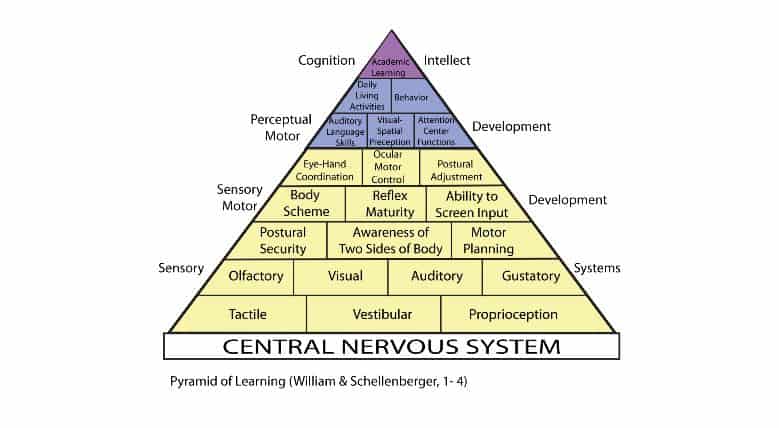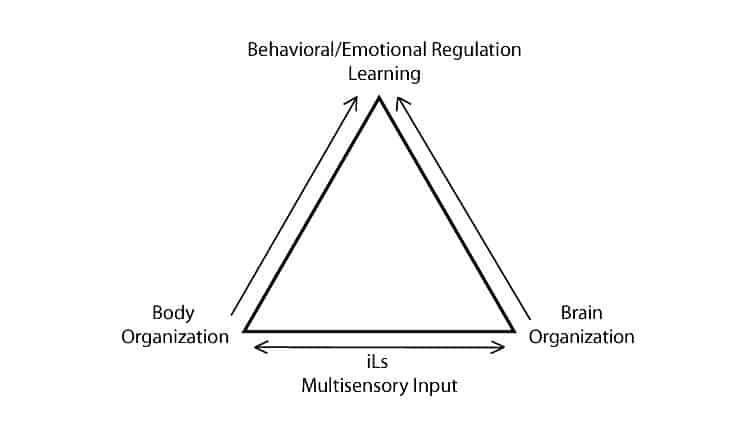Our Clinical Director, Dr. Ron Minson, has decades of experience working with adults and children with processing delays, attention and learning differences, as well as brain dysfunction … and more … using Unyte’s music and movement therapy.
In this seven-minute video, he shares his perspective on the importance of movement for brain development, memory, and learning. As a bonus, you get to watch Dr. Ron do this while standing on a balance board!
In summary, as Dr. Ron says, “the brain develops through movement, and it doesn’t stop developing as long as we keep moving!”
Below are some resources referenced in the video you may want to review and share with your clients:
- A study published in Pediatrics suggests that a daily movement break of 15 minutes or more during the school day may play a role in improving learning, social development, and health in elementary school children.
- A Survey of 500 elementary school teachers found that every teacher – 100 percent – said that recess is essential for young students’ mental and physical development.
- More on the relationship between movement and BDNF – brain-derived neurotrophic factor: This article goes into further detail on how and why movement – and, in turn, BDNF – improves brain function.
Movement is an essential part of most Unyte programs. We integrated movement into our therapies long ago based on some well-researched factors:
- Neurological and behavioral effects
- Anthropological and evolutionary reasons
- The combined effect of integrating three senses: auditory, visual and vestibular
Today, we’ll address the brain benefits of movement.
Physical exercise produces many benefits. In the short term, the increased blood circulation increases mental reaction times, improves working memory and focuses attention. It also elevates mood. Longer term, exercise leads to cognitive improvement and even the alleviation of depression and anxiety.
Nicknamed “Miracle-Gro” for the brain, BDNF – or Brain Derived Neurotrophic Factor – is responsible for many of these brain benefits. BDNF helps neurons to grow and their dendrites (extensions of a neuron that connect with other nerve cells) to expand their reach in order to strengthen synapses and improve brain function. Separate findings have correlated low levels of BDNF with cognitive decline in both people and animals. You’re already wondering how to get some BDNF, aren’t you?
The way to increase levels of BDNF in the brain is to exercise. How does exercise trigger BDNF? That hasn’t been clear until recent research looked at the mechanism of BDNF production. A specific gene triggers BDNF and it turns out that this gene functions better in active animals (and people). In sedentary animals, very densely packed molecules accumulate around the gene and prevent it from producing BDNF. In active animals, this same molecule exists, but not as abundantly and so BDNF continues to be produced. This is because, during exercise, an organic chemical compound known as a ketone is produced as a result of the breakdown of fat that occurs to provide energy during physical exertion. Some of these ketones migrate to the brain and decongest the molecular blockage of the BDNF gene thus clearing the way for BDNF production.
Unyte friend and conference speaker Dr. John Ratey says that “Activity stimulates more blood vessels in the brain to support more brain cells. And there is evidence that active kids do better on standardized tests and pay attention more in school.” BDNF plays a big role in these effects. Learn more about Dr. Ratey’s research and ideas in his TED talk.

Useful diagrams (many therapists use these in explaining Unyte to their clients – some have even laminated them since they use them so often):
The Pyramid of Learning

The Playbook activities that accompany the Unyte Focus program are another way to slip movement into your and your client or student’s day. The movement activities help to better integrate the processing of auditory, visual and vestibular input.




 © 2025 Unyte Health US Inc.
© 2025 Unyte Health US Inc.